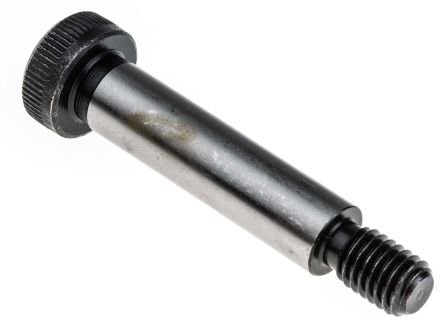In the vast panorama of engineering components, the significance of specific elements can be overlooked. Such is the case with shouldered bolts. These versatile fasteners, though often unnoticed, play a pivotal role in modern engineering and manufacturing. In this article, we will delve into the nuances of shouldered bolts and elucidate their importance in today’s sophisticated engineering designs.
The Anatomy of a Shouldered Bolt
Before understanding its relevance, it’s vital to get acquainted with the physical aspects of a shouldered bolt. Unlike a standard bolt which is threaded throughout its entire length, a shouldered bolt has an unthreaded ‘shoulder’ section followed by threaded ends. This unique design offers a combination of both rotational capability and axial alignment.
Precision and Alignment: The Two Pillars of Modern Engineering
Perfect Alignment Every Time
One of the paramount reasons why shouldered bolts are indispensable in modern engineering is the alignment precision they provide. The unthreaded shoulder ensures that the bolted components remain consistently aligned. This is particularly crucial in scenarios where misalignment could lead to functional problems or where precise alignment is paramount for efficient operation.
Rotation Without Displacement
Due to the smooth shoulder section, these bolts allow the connected parts to rotate around the shoulder without any lateral movement. This proves invaluable in mechanical setups like pulley systems, where parts need to move rotationally but remain axially fixed.
Strength and Durability: Fortifying Engineering Structures
The way shouldered bolts are manufactured ensures a much higher shear strength as compared to regular bolts. The shear forces – forces that try to cut or slice through materials – act upon the unthreaded shoulder section, which is typically stronger and more resilient than the threaded part. Hence, these bolts can handle increased loads and stresses without succumbing to failure.
Versatility Across Industries
Shouldered bolts aren’t confined to one particular industry or application. Their versatility is evident across various sectors:
Automotive Engineering
In the automobile industry, precision is non-negotiable. Shouldered bolts are widely used in vehicular assemblies to ensure that parts are not only aligned perfectly but also capable of withstanding the dynamic stresses and strains of the vehicle in motion.
Aerospace and Aviation
In aviation, the tolerance for error is practically zero. Aircraft components must align flawlessly, and the parts often require rotation without lateral displacement. The unique design of shouldered bolts makes them an obvious choice for such critical applications.
Manufacturing and Assembly Lines
In manufacturing facilities, where repetitive actions and consistent performance are the orders of the day, shouldered bolts prove to be irreplaceable. They ensure that machinery operates smoothly and that parts align as intended, minimising wear and tear and prolonging the lifespan of equipment.
Ease of Installation and Maintenance
Another unsung advantage of shouldered bolts is the simplicity they bring to installation and maintenance tasks. The clear differentiation between the threaded and unthreaded parts aids in quicker alignments during installations. Also, their robust design means fewer replacements, ensuring lower maintenance costs in the long run.
The Challenges and the Future
No engineering component is without its challenges, and the shouldered bolt is no exception. Ensuring the highest quality of materials and precision in manufacturing is crucial. Any inconsistency in the shoulder diameter or thread formation can compromise the bolt’s performance.
However, with the advent of advanced manufacturing techniques and an increasing appreciation of their benefits, the future for shouldered bolts is promising. As industries continue to seek precision, durability, and efficiency, the importance of these bolts will only amplify.
In Conclusion
Shouldered bolts, though humble in appearance, play a foundational role in modern engineering. Their unique design ensures precise alignment, robust strength, and unparalleled versatility across industries. As engineering challenges become more complex and the demand for accuracy grows, the role of these bolts will only become more pronounced. It’s a testament to the fact that in engineering, sometimes the smallest components can make the most significant difference.

